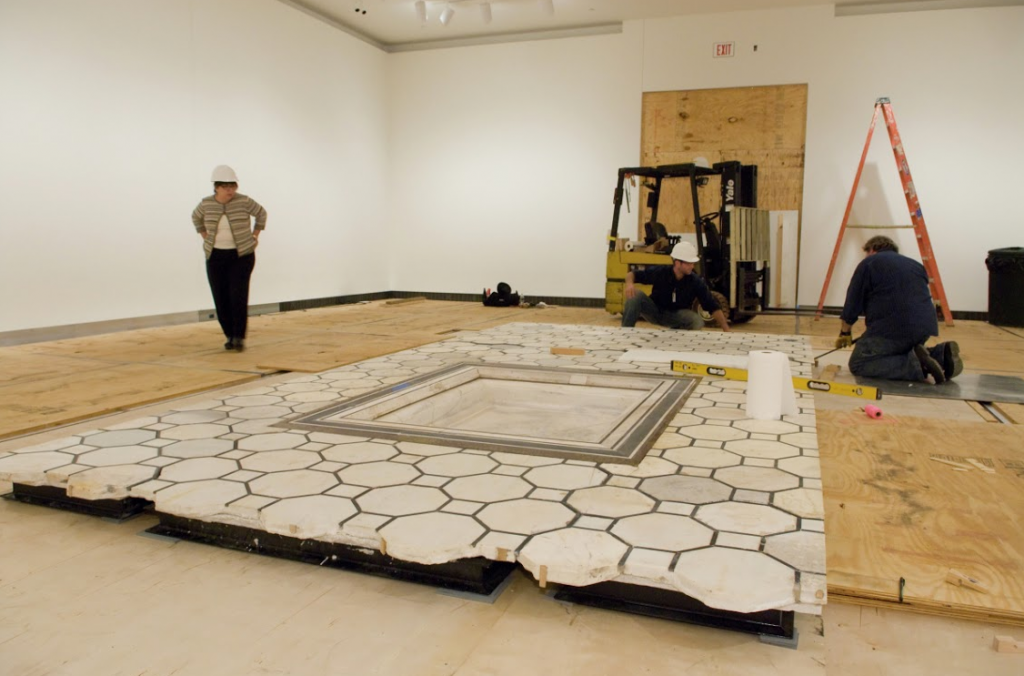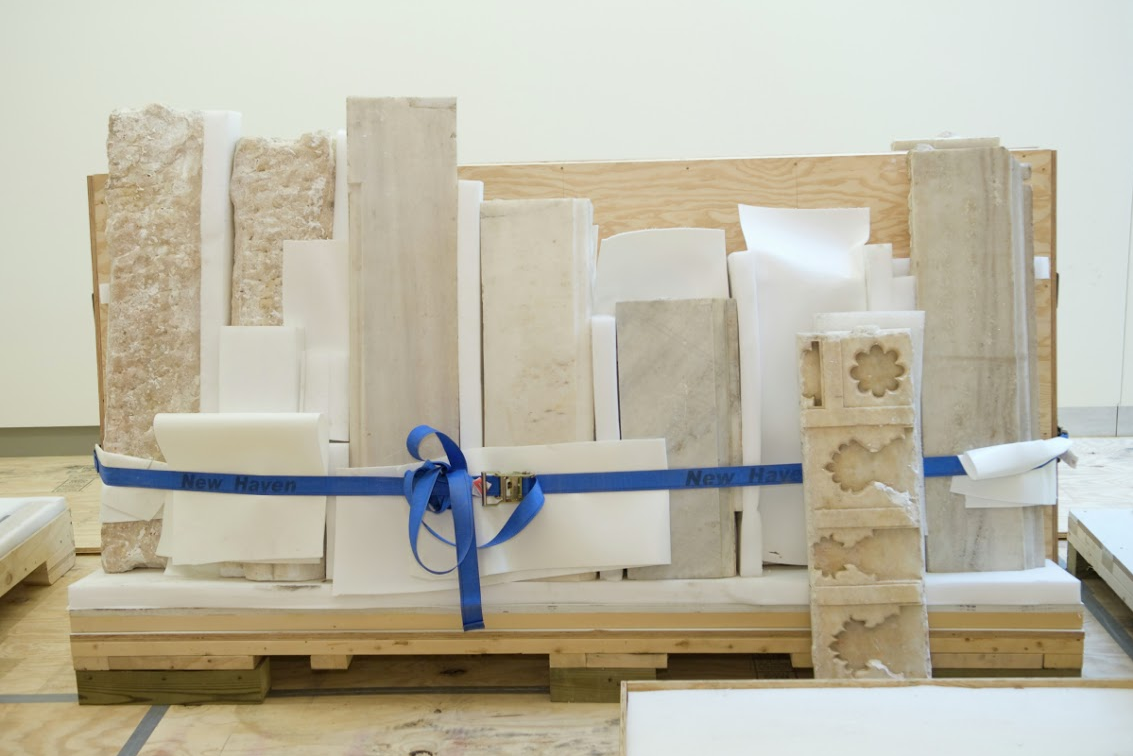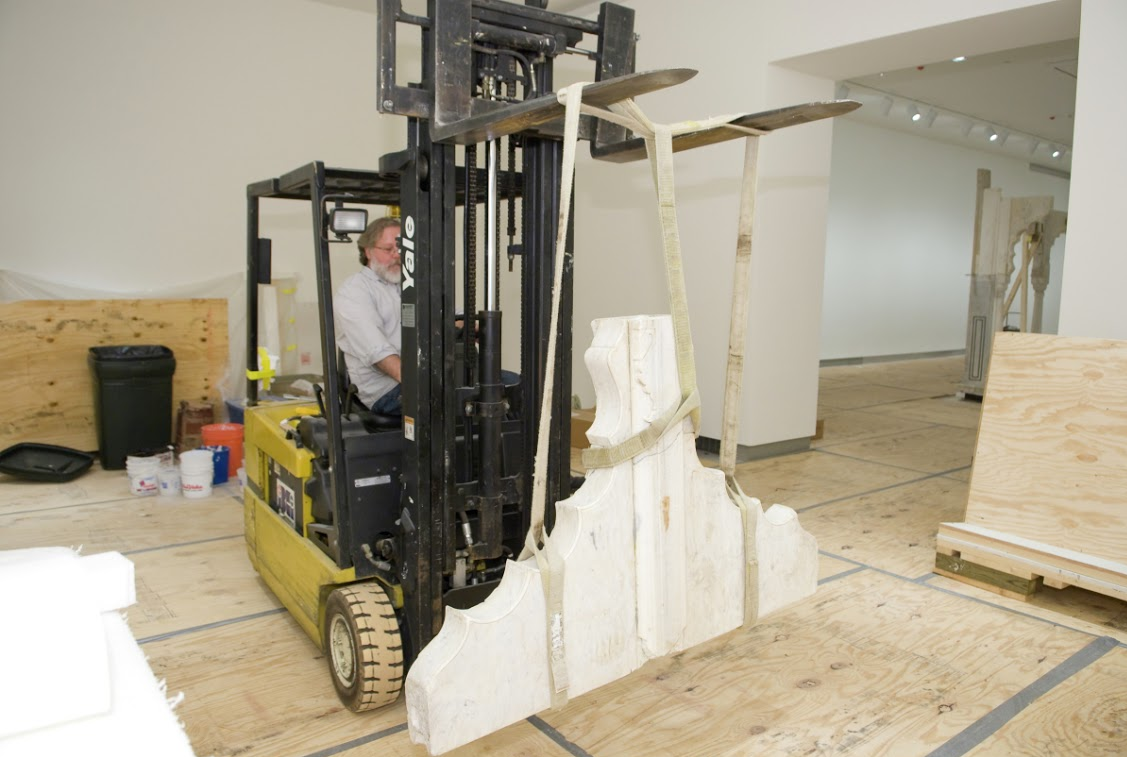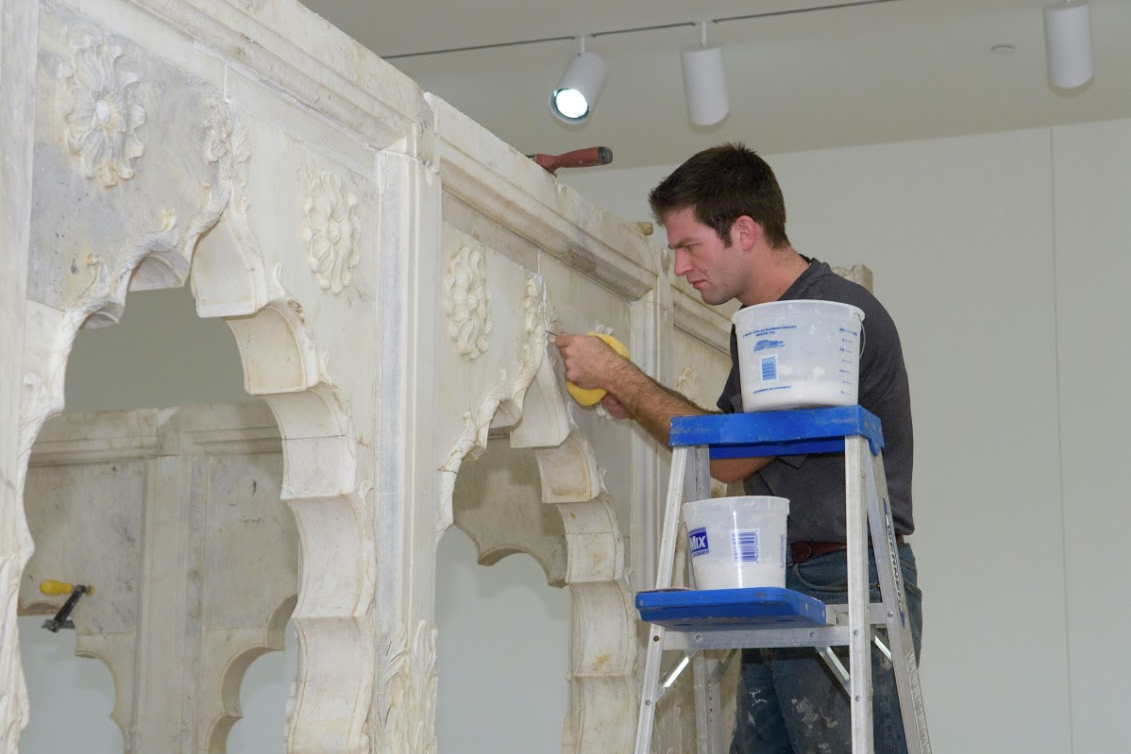Before deciding a course of action, conservators examined over 850 pieces to determine the different types of stone used. After identifying the majority of the stone as marble, conservators began to assess the degree of damage, the necessary repairs required, and cleaning.
Marble is a metamorphic rock. It is formed from limestone that has gone through a process of recrystallization through heat or pressure. Dense crystallization gives marble the properties needed for a highly polished surface. Marble can vary in color from the whites and creams frequently seen in classical sculpture to pinks, greens, browns, grays and yellows. Color variations are the result of mineral impurities in the original limestone.
Marble is an incredibly durable material. It can withstand the elements; including extreme heat and exposure to water. Unfortunately, marble’s durability does not prevent it from being brittle and breaking when dropped or handled poorly. Marble is also affected by acids or strong alkalis. Details on a marble sculpture could be lost if exposed to acid rains for an extended period of time.
Marble can be cleaned using both wet and dry methods. Distilled or de-ionized water can be a very effective material for cleaning dirt and to neutralize acids. For oily residue, conservators may use solvents like non-ionic detergent or mineral spirits. Groomsticks, a malleable, natural rubber product designed to lift soil, grime, and particles of dirt can be used for dry cleaning.
This 27-ton jigsaw puzzle took Bronze et al, Ltd. conservators four years to solve. According to the conservation studio, the pavilion’s floor was in such disarray upon receipt that the crates “essentially contained the equivalent of many large broken saltine crackers.” After 5,400 man-hours, 150 round trips by truck, all 850 pieces were delivered to the museum for installation. And now, the Virginia Museum’s pavilion is the only Mughal-style structure in an American museum.

Majority of floor construction completed.
The floor was one of the most complex and problematic components of the pavilion in terms of restoration. The complex system of interlocking and inlaid geometric forms suffered extensive damage. The floor is now divided into several massive sections which are permanently attached to large slabs of backing marble. The decorative outer perimeter of the floor is comprised of white marble, with inlays of black and mottled stone. Upon receipt of the pavilion many of the large sections of backing marble in addition to the decorative inlays, were fractured. However, given the pavilion’s age and the perils of movement, the pavilion was and still is in amazingly good condition overall.

Pieces of the Garden Pavilion before conservation construction.

Transportation of a large piece of marble for Garden Pavilion conservation construction.

Later stage of Garden Pavilion conservation: Almost done!

Conservator using adhesives to mend Garden Pavilion details.
Explore More:
Details and Materials Associated with the Garden Pavilion